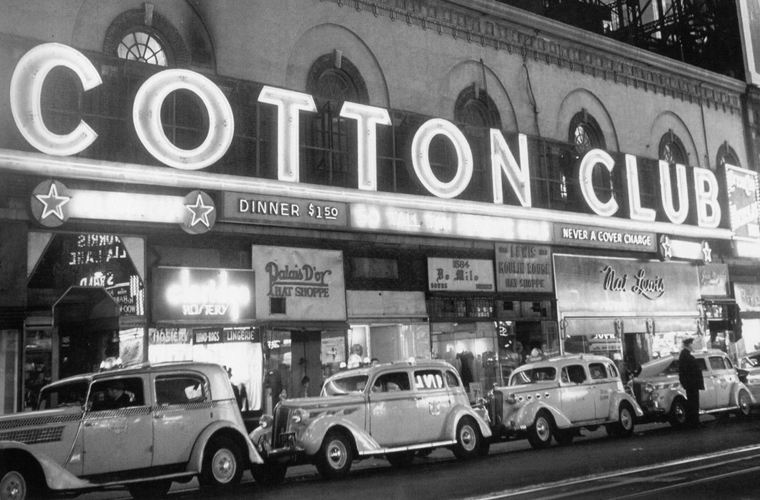Cotton Club, the legendary nightspot in the Harlem district of New York City that for years featured prominent black entertainers who performed for white audiences. The club served as the springboard to fame for Duke Ellington, Cab Calloway, and many others.
Jack Johnson, the first African American heavyweight boxing champion, opened the Club Deluxe, a 400-seat nightclub at the corner of 142nd Street and Lenox Avenue, in 1920. In 1922 the club was taken over by Owen (“Owney”) Madden, a well-known Manhattan underworld figure. Madden rechristened the establishment of the Cotton Club, limited the audience to white patrons, entirely reworked the interior, and turned the club into the most popular cabaret in Harlem. The new 700-seat club offered stimulating surroundings for its nightly revues by a renowned chorus line. Weekly radio broadcasts spread the fame of the club and its musicians to a national audience.
Among the many seminal figures of jazz and blues who performed at the Cotton Club, bandleader Duke Ellington was perhaps the most closely associated with the venue. His orchestra was hired as the house band in 1927, and it was said that the primitive-style decor of the club inspired the “jungle style” of his bands of the era. “Mood Indigo,” “Black and Tan Fantasy,” “Creole Love Call,” and “Rockin’ in Rhythm” were among the Ellington classics first performed by the band during its Cotton Club years. Cab Calloway and his orchestra took over as the house band in 1931; they too had a long and successful run at the club. Other prominent entertainers, including Louis Armstrong, Ethel Waters, Lena Horne, Bill (“Bojangles”) Robinson, and Stepin Fetchit, also contributed greatly to the club’s success.
The Cotton Club’s best years were from 1922 to 1935. Following the Harlem riots of 1935, the establishment moved to West 48th Street, but the club never regained its earlier success and was closed in 1940. Since then the Cotton Club name has been appropriated by nightclubs around the world, including a re-creation of the original club in Harlem that opened in 1978. Films such as Francis Ford Coppola’s fictional The Cotton Club (1984) and Ken Burns’s documentary Jazz (2001) brought the story to new audiences.

